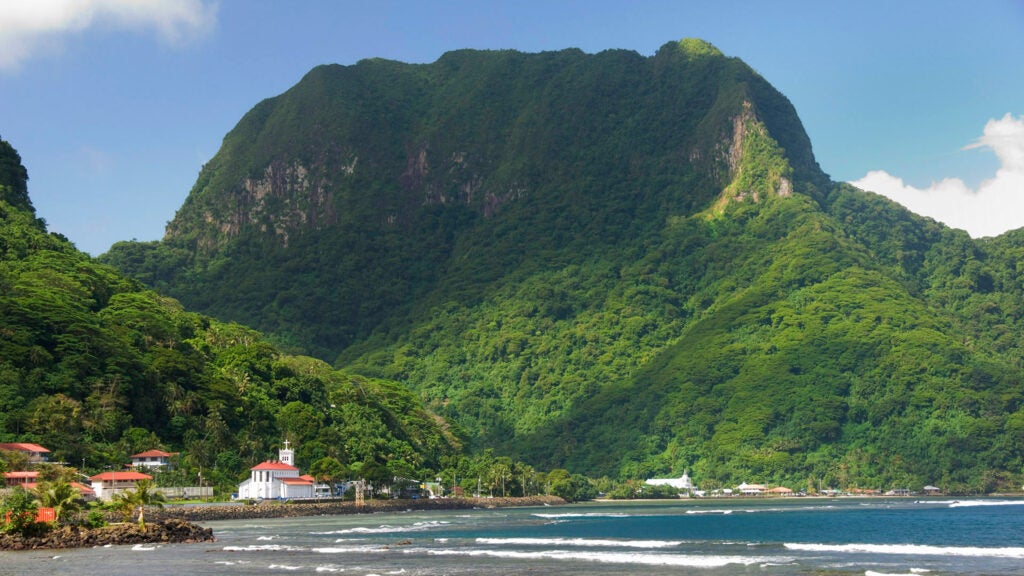No products in the cart.
Outdoor Adventure
The Least-Visited National Parks Last Year
Last year was a banner one for our national parks, with 325.5 million recreation visits in the books for 2023. Last week the National Park Service released its annual visitation statistics, detailing the total number of visitors to the 400 units—which include national seashores and historic sites—the park service manages. Overall, recreation visits increased by 13 million, an uptick of 4 percent compared to 2022. The number of hours spent hanging out in our parks was also up 4 percent, from 1.36 to 1.4 billion hours. That’s a lot of hiking, or sitting in moose traffic jams, depending on the park.
Parks have never been more popular than they were in 2016, when the national park service was celebrating its centennial and visitation numbers hit a record 330,971,689. That total stayed constant for the next few years, with more than 327 million recreation visits in 2019. Then the pandemic hit, parks closed, travel halted, and visitation dropped by 90 million visits in 2020. The popularity of our scenic national parks has been climbing steadily since, last year almost reaching pre-pandemic levels.
The stats break down visitation by park, so you can see which of our treasured landscapes are the most and least popular. The Blue Ridge Parkway continues to be the most sought-after park unit in the country (with 16,757,635 visits), and Great Smoky Mountains National Park rules by far among national parks (13,297,647 visits, with the next-highest contenders all in the four million range). Gulf Islands National Seashore jumped three spots to make it into the top five most popular park units in 2023. And Glen Canyon National Recreation Area climbed into the coveted top-ten list with a near doubled 5,206,934 recorded visits, a massive jump from 34th in 2022, when it saw 2,842,776.
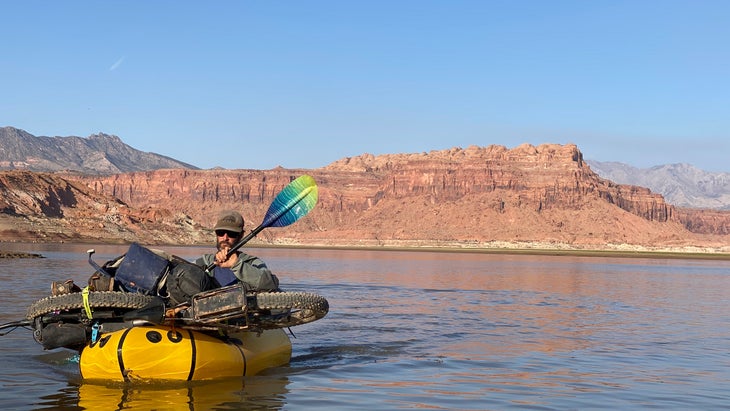
Glen Canyon protects 1.25 million acres of land in Utah and Arizona, including Lake Powell. A multi-year drought had kept many visitors at bay, but the record-breaking snowfall of the winter of 2022 to 2023 brought water levels back up, allowing several boat ramps and access points to reopen. I’ve explored Lake Powell by packraft at low water level, when it was muddy around the edges, but still pretty damn spectacular. Visiting the lake when the water is up would be amazing.
Then again, I like this next trove of data—because it tells you where to go to avoid crowds. My home is close to both the Blue Ridge Parkway and Great Smoky Mountains National Park, so I know a little too much about the popular places.
While the top 10 or so most-visited parks see millions of people a year, the parks at the bottom of the list see only a few thousand. Alaska’s Gates of the Arctic National Park has reclaimed the longtime title of “Least Visited National Park” in the U.S. after the National Park of American Samoa displaced it in 2022. Congratulations?
These overlooked parks are no less spectacular: offering tropical islands, massive sand dunes, 18,000-foot peaks, and more glaciers than any other spot in the U.S. It might take extra time and work to reach some of them, but the rewards are dramatic landscapes and big adventures…all to yourself.
Here are the 11 least visited national parks in 2023.
1. Gates of the Arctic National Park and Preserve, Alaska
Recreational Visits: 11,045
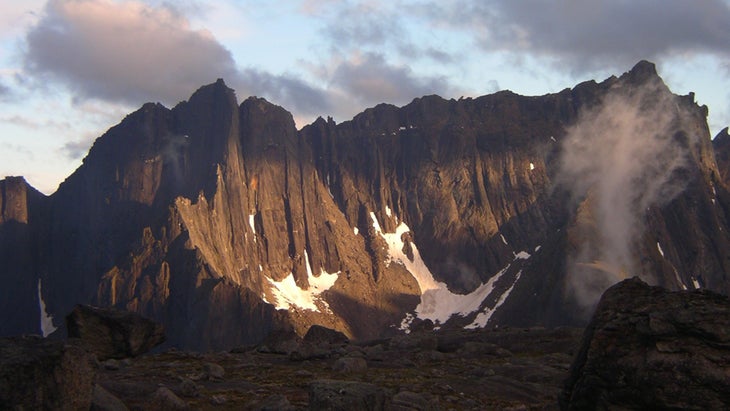
Location: Sitting in Alaska, north of the Arctic Circle, Gates of the Arctic covers 8.4 million acres of the rugged and cold Brooks Range. There are no roads or maintained trails within the park, although there is one small village, Anaktuvuk Pass (pop: 451), a Nunamiut Inupiat settlement typically reached by small plane.
One Big Adventure: Backpack among the Arrigetch Peaks, a cluster of mountains known for steep, vertical spires deep within the Brooks Range. It’s a multi-day adventure that requires a series of bush plane flights.
2. National Park of American Samoa
Recreational Visits: 12,135
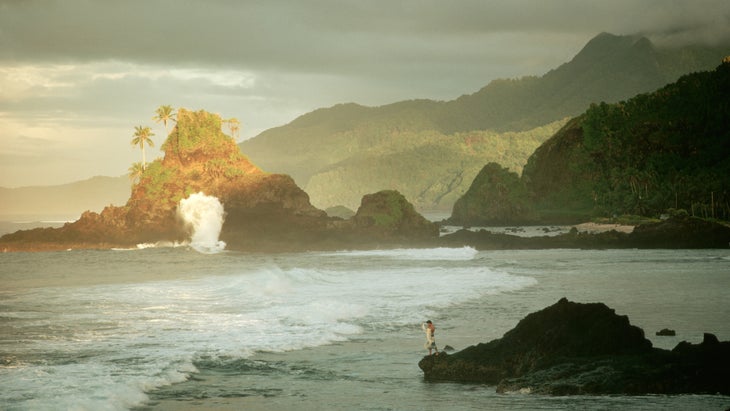
Location: In the South Pacific, 2,600 miles southwest of Hawaii, National Park of American Samoa covers portions of three volcanic islands full of tropical forests, coral sand beaches, and traditional Samoan villages. The seascape is just as impressive; the ocean surrounding the islands are home to more than 950 species of fish and 250 species of coral.
One Big Adventure: The national park facilitates a homestay program where visitors can stay with locals to learn Samoan customs and the South Pacific lifestyle.
3. Lake Clark National Park and Preserve, Alaska
Recreational Visits: 16,728
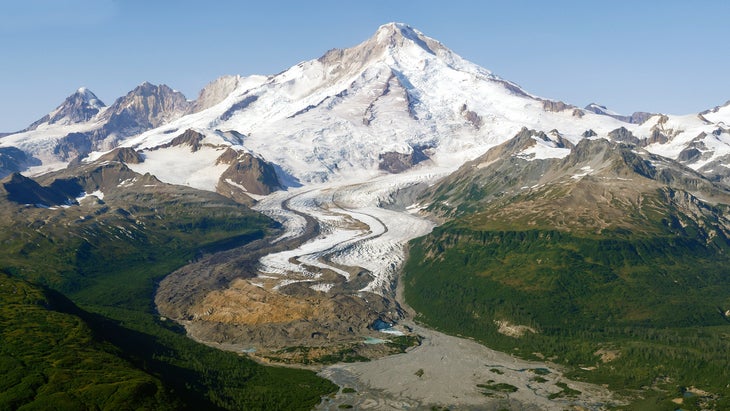
Location: Roughly 100 miles southwest of Anchorage, Lake Clark is 4,000,000 acres of glaciers, peaks, and active volcanoes. No roads lead to the park, which can only be reached by small plane. The park is home to three National Wild and Scenic Rivers (the Mulchatna, Tlikakila, Chilikadrotna), attracting paddlers and anglers alike.
One Big Adventure: Backpackers should hit the 50-mile Telaquana Route, where you can follow in the footsteps of local Dena’ina Athabascans and fur traders who blazed the path between the shores of Lake Clark and Telaquana Lake.
4. Kobuk Valley National Park, Alaska
Recreational Visits: 17,616
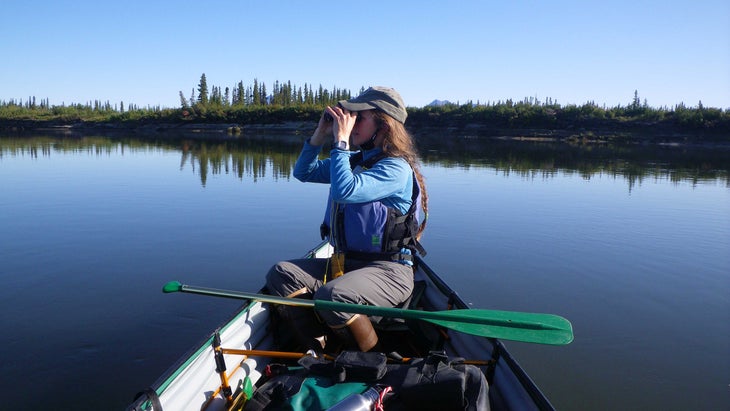
Location: Sitting 25 miles north of the Arctic Circle, Kobuk Valley National Park protects the river of the same name that has served as a thoroughfare for wildlife, particularly caribou, and the people who have been hunting the river valley for 9,000 years. Kobuk Valley is home to the 25-square-mile Great Kobuk Sand Dunes, which rise abruptly from the surrounding trees.
One Big Adventure: Take a bush plane into Great Kobuk Sand Dunes, camp, hike, and watch for caribou.
5. Isle Royale National Park, Michigan
Recreational Visits: 28,965
Location: A cluster of islands in the middle of Lake Superior near the Canadian border, Isle Royale is a car-less wilderness where moose and wolves roam. The park is only accessible by boat or float plane, but once you’re there hikers have 165 miles of trails to explore. A small population of gray wolves have lived in Isle Royale since 1948, when the first wolves crossed an ice bridge that formed, connecting the island to mainland Canada. The population had nearly died out when, in 2018, park wildlife experts relocated wolves to the island.
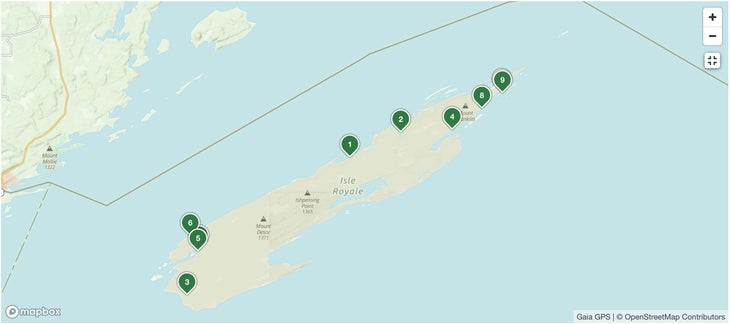
One Big Adventure: Backpack the 40-mile Greenstone Ridge Trail, which crosses over the park’s main island, connecting backcountry lakes and campsites. Or, hike an 8.5-mile stretch of the Feldtman Lake Loop from Windigo Dock to Feldtman Lake, which includes a quick, .8-mile side trip to Rainbow Cove, where a rocky shoreline on Lake Superior offers long range views of Rock of Ages Lighthouse on a clear day.
6. Katmai National Park and Preservation, Alaska
Recreational Visits: 33,763
Location: Man, Alaska has a lot of lonely national parks. But Katmai is special because it’s so diverse. Situated on a peninsula in southern Alaska, roughly 260 miles southwest of Anchorage, it has the rugged mountains and glaciers you’d expect, but also lush valleys, tumultuous coastline, and 40 square miles of desert landscape, thanks to the eruption of Novarupta Volcano, which scorched the earth more than 100 years ago. Katmai is probably best-known for its bear cam, where you can sit in your office and peep at brown bears eating salmon at Brooks Falls on the Brooks River.
One Big Adventure: Katmai isn’t connected to any town by road, so most people show up via boat or float plane from King Salmon or Anchorage. That alone is an adventure. Visitors usually start by visiting Brooks Camp, home to the park’s summer headquarters, to check in and get the required bear-safety orientation, then head to the various platforms that overlook the Brooks River. If you’re looking to dig deeper, consider paddling the 80-mile Savonoski Loop, which connects a chain of lakes through Katmai’s backcountry. Starting at Brooks Camp, kayakers will paddle a circle around 3,183-foot Mount La Gorce, navigating two class I-II rivers and huffing a 1.5-mile long portage between open-water stretches of three different lakes.
7. North Cascades National Park, Washington
Recreational Visits: 40,351
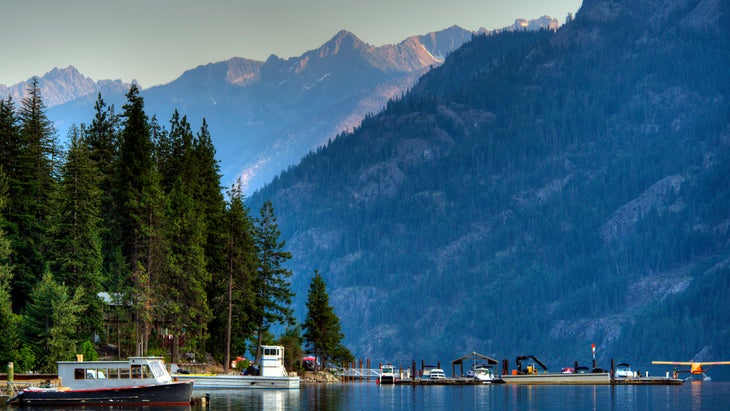
Location: Only three hours from the city of Seattle, North Cascades is a rugged expanse of mountains with more than 300 glaciers, the largest collection of any park outside of Alaska. In other words, North Cascades is wintry and snow-covered most of the year, so much so that most visitors only hit the park between June and September.
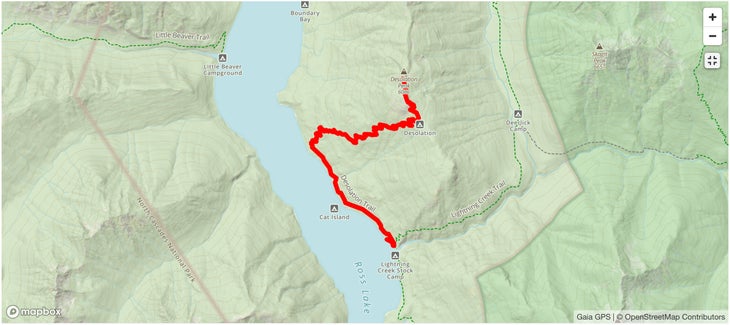
One Big Adventure: Hike Desolation Peak, a steep, 9.4-mile ascent from the edge of Ross Lake that delivers sweeping views from a lookout tower of the Ross Lake National Recreation Area.
8. Wrangell-St. Elias National Park and Preserve, Alaska
Recreational Visits: 78,305
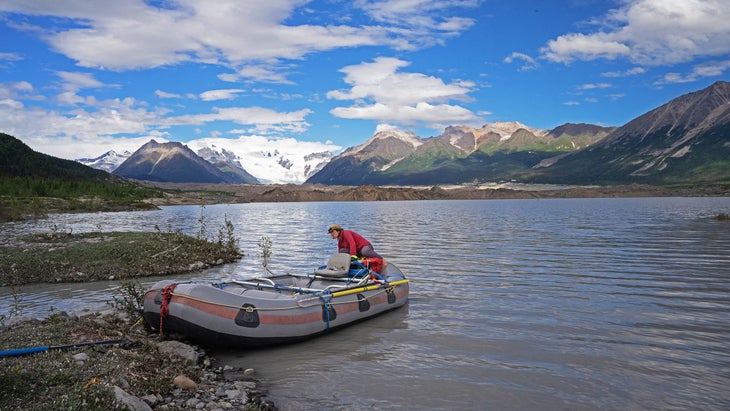
Location: Sitting more than 200 miles east of Anchorage, Wrangell-St. Elias encompasses 13.2 million acres where four major mountain ranges converge, encompassing both the largest collection of glaciers and the highest concentration of 16,000-foot peaks in the U.S., including seven of the 20 highest peaks in America. The park is a land of extremes—14,163-foot Mount Wrangell is an active volcano with vents of steam on the summit, and Bagley Icefield, near the coast, is North America’s largest subpolar icefield.
One Big Adventure: Climb Mount Bear, a 14,831-foot peak deep in the St. Elias Range that doesn’t require any technical climbing, but is a beautiful ski-mountaineering adventure.
9. Dry Tortugas National Park, Florida
Recreational Visits: 84,285
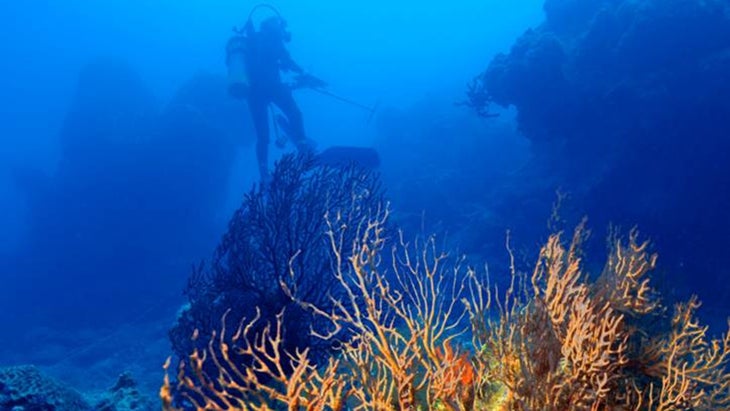
Location: Head to Key West and then keep going, 70 miles west into the Gilf of Mexico to Dry Tortugas, a collection of seven islands only accessible by boat or seaplane. The atolls are a mix of palm trees and soft sand beaches with world-class snorkeling and diving just offshore. Visitors can camp on the largest island, Garden Key, in the shadows of the massive Fort Jefferson, a Civil War-era prison.
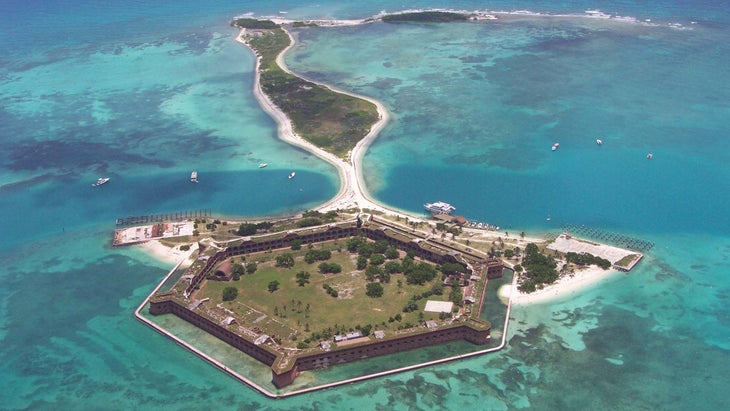
One Big Adventure: Dive the Windjammer Wreck, the remains of a ship that sank in 1907 off Loggerhead Key after running aground on the surrounding reef. The wreck is in shallow water (20 feet at the deepest point), so snorkelers and divers can explore it together. Or, bring a kayak and paddle around Garden, Bush, and Long Key, a trio of islands so close together, they’re sometimes joined by sandbars. You’re looking for nurse sharks and sea turtles in the clear water below and, above, any of the 300 species of birds that migrate through the park every year.
10. Great Basin National Park, Nevada
Recreational Visits: 143,265
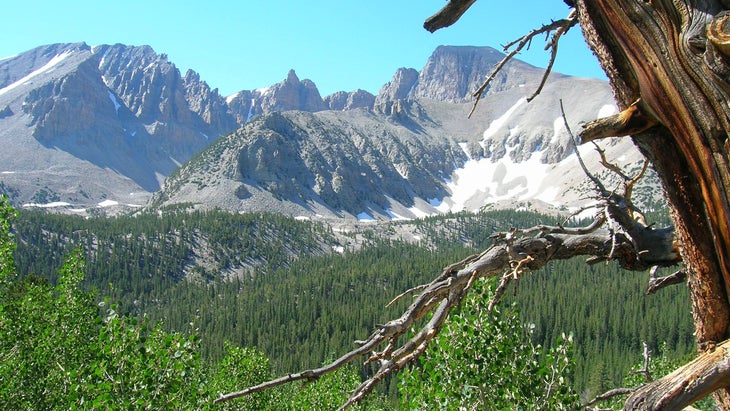
Location: The 77,180-acre Great Basin National Park sits in the high desert of Eastern Nevada, 300 miles north of Las Vegas. The terrain ranges from the 13,064-foot Wheeler Peak to an expansive cave system, called Lehman Caves. You’ll also find alpine lakes, old-growth bristlecone pine forests, and Nevada’s only remaining glacier, Wheeler Peak Glacier.

One Big Adventure: Glimpse Nevada’s last piece of permanent ice by hiking the 4.8-mile Bristlecone and Glacier Trail to the bottom of the two-acre glacier. You’ll cruise through groves of ancient bristlecone, some estimated to be 4,000 years old.
11. Voyageurs National Park, Minnesota
Recreational Visits: 220,825
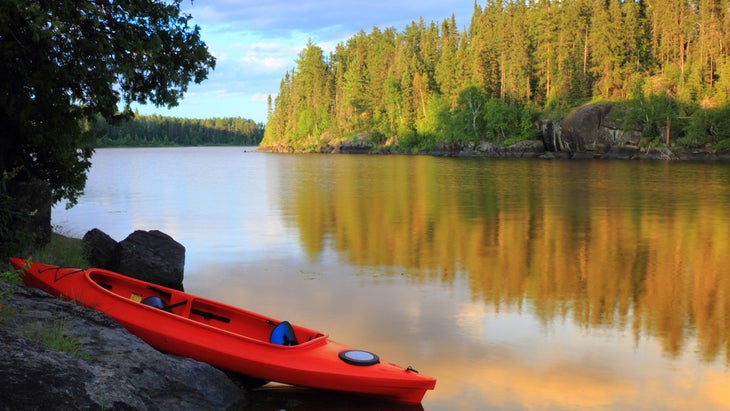
Location: In Northeastern Minnesota, up against the Canadian Border, Voyageurs National Park is mostly made up of water. This 218,055-acre park is loaded with lakes—four big ones that form a border for the park and 26 smaller interior lakes, most interconnected by 60 miles of canoe and kayak trails. There are endless shorelines and islands to explore, and dense habitat for healthy moose and wolf populations.
One Big Adventure: Head to the interior lakes, where marked canoe trails lead to primitive backcountry campsites you can only reach by boat. And you have to use the national park service’s boats; once you have a camping permit, you get a code to unlock one of the canoes that the NPS has staged at certain points for use to prevent the spread of invasive species. The Chain of Lakes are four small bodies of water on the interior of the Kabetogama Peninsula that you can piece together via short portages and creeks to create a 13-mile hiking and paddling adventure. Each of the four lakes has its own campsite, one per lake, and most people will pick a single campsite as a basecamp and explore from there, so the mileage of your adventure will vary.
Graham Averill is Outside magazine’s national parks columnist. After researching these remote parks, he’s thinking it might be time to get his pilot’s license and invest in a float plane.
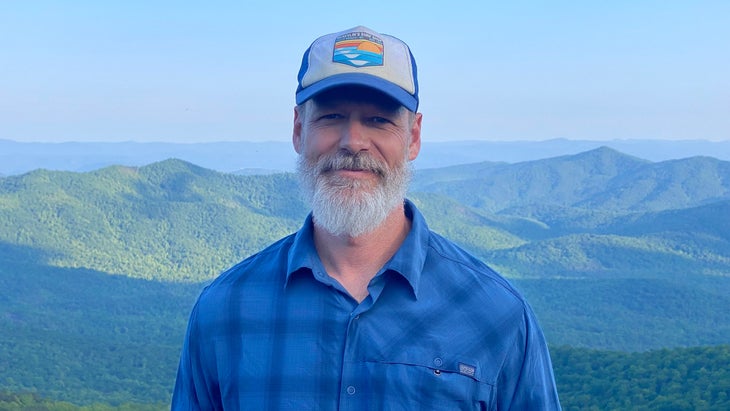
For more by this author, see:
Source link

